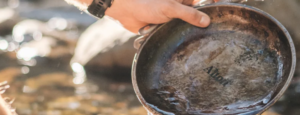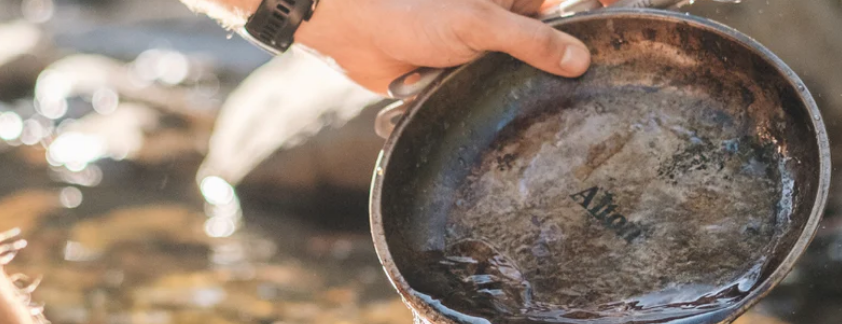Access to clean, safe water is one of the most pressing challenges of the 21st century. As climate change, industrial pollution, and population growth continue to strain global water resources, innovative materials are being called upon to transform how we purify and manage water. Among these, titanium has emerged as a powerful ally in the fight for sustainable water solutions.
Renowned for its durability, corrosion resistance, and catalytic properties, titanium is playing an increasingly critical role in advancing clean water technologies. From advanced filtration systems and desalination plants to water disinfection and environmental monitoring, titanium and its compounds are revolutionizing the way we approach water purification and conservation.
This article delves into the transformative potential of titanium in clean water technologies, highlighting its advantages, current applications, and the promising future it holds in building a water-secure world.
Why Titanium Is Ideal for Water Treatment
Titanium’s unique combination of physical and chemical properties makes it particularly suited for use in water treatment systems. Unlike many other metals, titanium maintains its structural integrity in wet and corrosive environments, making it ideal for long-term use in harsh water conditions.
Key Benefits of Titanium in Water Applications:
- Corrosion Resistance: Especially in saline and acidic environments, titanium does not rust or degrade.
- Non-Toxic and Biocompatible: Safe for both environmental and human health.
- Mechanical Strength: Suitable for high-pressure and industrial-scale systems.
- Photocatalytic Activity (in oxide form): Enables advanced water disinfection and pollutant breakdown.
These attributes make titanium a standout material in both traditional and emerging water purification technologies.
Titanium Dioxide (TiO₂): A Game-Changer in Water Purification
One of the most impactful uses of titanium in clean water tech is in the form of titanium dioxide (TiO₂). This white, non-toxic compound has exceptional photocatalytic properties, which means it can use light—especially ultraviolet (UV)—to initiate chemical reactions that break down harmful pollutants.
1. Photocatalytic Water Disinfection
When exposed to UV light, titanium dioxide creates reactive oxygen species that:
- Kill bacteria, viruses, and other pathogens
- Break down organic pollutants and volatile compounds
- Remove dyes, pesticides, and pharmaceutical residues from water
This makes TiO₂-coated surfaces ideal for self-cleaning filters, UV disinfection systems, and solar-powered water purifiers, especially in off-grid or rural settings.
2. Advanced Oxidation Processes (AOPs)
TiO₂ is also used in advanced oxidation processes, where it works alongside ozone or hydrogen peroxide to produce hydroxyl radicals—potent agents that degrade even the most persistent pollutants in wastewater and industrial effluents.
Titanium in Desalination and Membrane Technologies
Desalination is a growing necessity in many parts of the world facing freshwater scarcity. However, the high salinity of seawater and the corrosive nature of brine by-products pose a significant challenge to traditional desalination equipment.
1. Titanium in Reverse Osmosis (RO) Systems
Titanium is used in:
- High-pressure pumps
- Piping and tubing systems
- Heat exchangers
Thanks to its resistance to chloride-induced corrosion, titanium extends the lifespan and improves the efficiency of desalination plants, reducing maintenance costs and operational downtime.
2. Membrane Supports and Housings
In membrane filtration systems, titanium components help maintain structural integrity under high pressure, ensuring reliable filtration of micro-pollutants, bacteria, and heavy metals.
Electrochemical Water Treatment with Titanium Electrodes
Electrochemical methods are gaining popularity for treating polluted water with high precision and low environmental impact. Titanium electrodes, especially when coated with metal oxides like ruthenium or iridium, are essential in these systems.
Applications Include:
- Electrocoagulation: Removes suspended solids and heavy metals.
- Electro-oxidation: Breaks down organic contaminants and pathogens.
- Disinfection: Generates chlorine or ozone in situ for sterilizing water.
These systems are compact, energy-efficient, and ideal for point-of-use water treatment in households, hospitals, and industrial sites.
Titanium in Portable and Emergency Water Solutions
In disaster zones, refugee camps, or remote communities, access to clean drinking water can be a matter of life and death. Titanium’s durability and light weight make it ideal for portable water purification units.
Examples Include:
- Solar water disinfection kits using TiO₂-coated panels
- Portable filters and straws with titanium meshes
- Compact UV sterilizers powered by solar or battery sources
Because titanium is non-toxic and does not leach harmful substances, it is especially safe for vulnerable populations, including children and the elderly.
Environmental Monitoring and Detection with Titanium Sensors
Titanium is also used in the development of water quality sensors and probes, particularly in marine and industrial environments where other materials might corrode quickly.
Benefits of Titanium-Based Sensors:
- Long-lasting performance in saline or acidic conditions
- Accurate measurement of pH, oxygen levels, heavy metals, and temperature
- Minimal maintenance and recalibration
These sensors are critical for early detection of contamination, helping industries and municipalities maintain safe water standards and respond swiftly to pollution events.
Sustainability and Lifespan: The Economic Advantage of Titanium
While titanium has a higher initial cost than some other materials, its exceptional lifespan and low maintenance requirements make it a more economical choice over time. Systems built with titanium components:
- Require fewer replacements
- Have lower risk of contamination
- Reduce downtime and water system failures
Moreover, titanium is 100% recyclable, contributing to the circular economy and reducing the environmental footprint of water infrastructure projects.
Innovations on the Horizon
The future of titanium in water technologies is bright, with researchers exploring new ways to harness its full potential:
- Nanostructured TiO₂ for faster and more efficient pollutant breakdown
- Titanium-based hybrid membranes for targeted contaminant removal
- Smart coatings and self-healing surfaces that reduce fouling and extend system life
As water challenges grow more complex, titanium’s adaptability and performance will continue to drive innovation in clean water solutions across the globe.
Conclusion: Titanium—A Catalyst for Clean Water and a Sustainable Future
From its role in cutting-edge water purification systems to its use in robust, corrosion-resistant infrastructure, titanium is shaping the future of clean water technologies. Its unique properties have made it a material of choice for engineers, environmental scientists, and humanitarian organizations working to ensure that safe, clean water is accessible for all.
As we face the growing threat of water scarcity, titanium offers more than just a technical solution—it represents a commitment to sustainability, resilience, and human well-being. By investing in and expanding the use of titanium in water technologies, we move closer to a future where every person on Earth can enjoy the basic right to clean and safe water.

Also Read :
